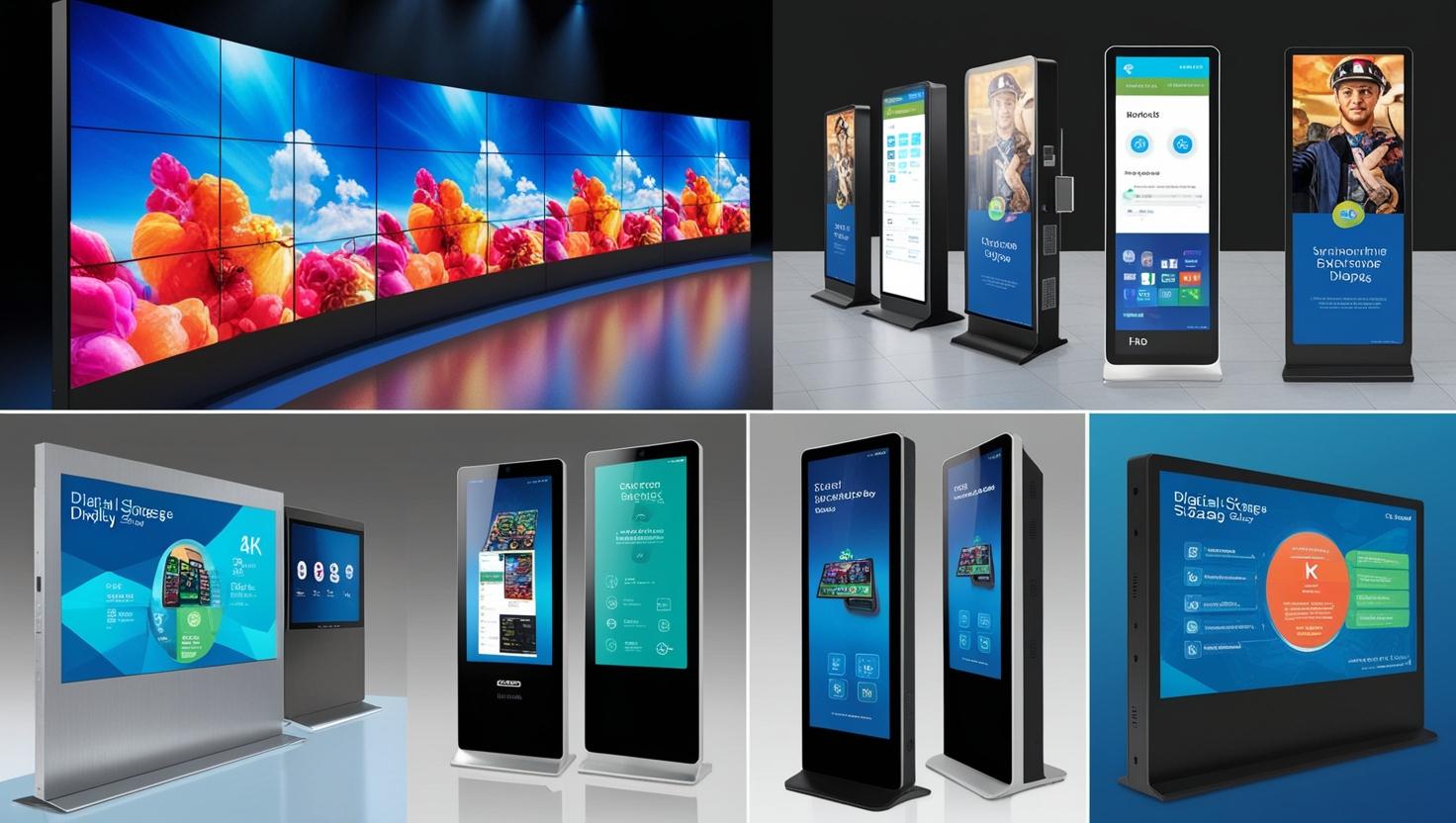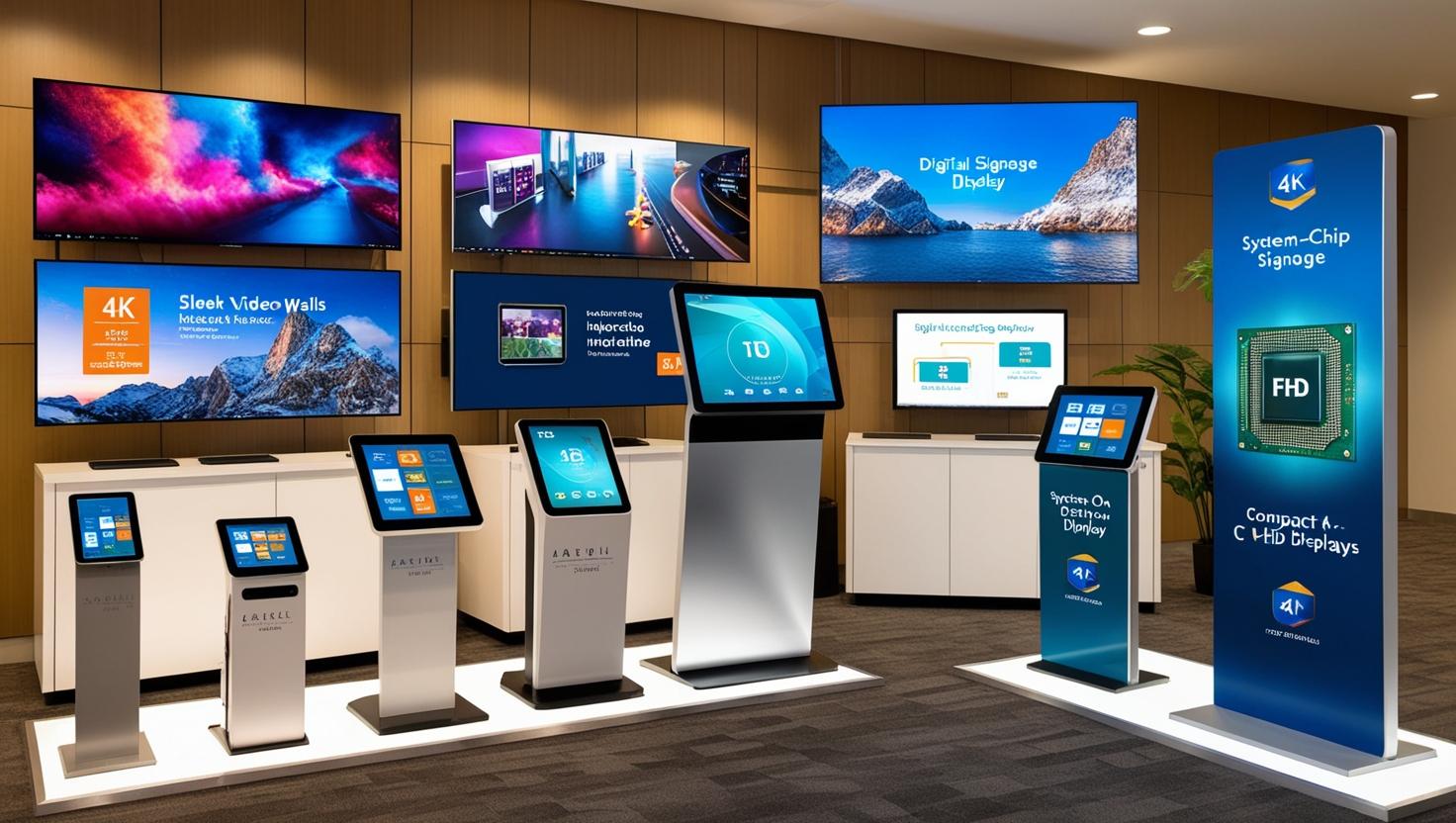The North America digital signage market is undergoing a transformative shift, driven by advancements in smart technologies, increasing demand for real-time information, and the growing focus on enhanced customer engagement. From retail stores and airports to corporate offices and healthcare facilities, digital signage is becoming an essential tool for communication, marketing, and automation. This article delves into the key growth drivers, technological trends, industry applications, challenges, and future opportunities that define the digital signage landscape in North America.

The North America digital signage market, encompassing both the United States and Canada, is experiencing a robust expansion. Market forecasts estimate a double-digit CAGR through 2030, fueled by high adoption rates across industries and continuous technological innovations.
Digital signage systems include display screens, content management software, media players, and interactivity components, used to deliver multimedia content such as advertisements, information, and entertainment. With urbanization, the proliferation of smart cities, and increasing digitization of customer-facing operations, digital signage has transitioned from a static display tool to an interactive, intelligent solution.
a. Retail Sector Transformation
Retail remains one of the largest consumers of digital signage technology in North America. As physical stores strive to compete with e-commerce platforms, digital displays are enhancing the in-store experience through dynamic promotions, product information, and interactive shopping assistance.
b. Smart Cities and Public Infrastructure Investment
Municipal governments and city planners are increasingly adopting digital signage for wayfinding, traffic updates, public safety alerts, and transit schedules. Smart bus stops, digital kiosks, and interactive city maps are just a few examples of how signage is improving urban living.
c. Corporate and Educational Use
In offices and educational institutions, digital signage is streamlining communication, facilitating internal updates, broadcasting emergency alerts, and promoting brand identity.
d. Healthcare Modernization
Hospitals and clinics use digital displays to inform patients about services, manage queues, reduce perceived waiting times, and enhance wayfinding in large facilities.
e. Entertainment and Sports Arenas
LED video walls and large-format displays are becoming integral in stadiums, theme parks, and cinemas, delivering immersive experiences and enhancing audience engagement.
Download PDF Brochure @ https://www.marketsandmarkets.com/pdfdownloadNew.asp?id=513
a. AI and Machine Learning Integration
Artificial intelligence is enabling context-aware digital signage that adapts content based on real-time inputs like audience demographics, foot traffic, and weather conditions. AI also helps automate content scheduling and performance analytics.
b. Internet of Things (IoT)
IoT connectivity allows digital signs to receive data from other smart devices and sensors, creating synchronized environments. For example, a digital sign outside a building can display real-time occupancy levels or air quality data.
c. Cloud-Based Content Management
Cloud platforms are simplifying the management of signage networks, especially for businesses with multiple locations. Remote content updates, scalability, and performance monitoring have made cloud CMS a standard.
d. Interactive and Touchless Technologies
Touchscreens, gesture recognition, and voice-activated displays are enhancing user interactivity. In the post-COVID era, contactless interfaces have gained popularity in kiosks and self-service terminals.
e. Advanced Display Technologies
Emerging display formats like OLED, QLED, microLED, and flexible displays are expanding creative possibilities. These technologies offer improved color, brightness, and energy efficiency.
a. Retail and Hospitality
- Product promotions
- Interactive catalogs
- Personalized advertising
- Digital menu boards
b. Transportation and Logistics
- Arrival/departure boards
- Interactive maps
- Wayfinding
- Safety announcements
c. Healthcare
- Appointment check-ins
- Health tips and services
- Emergency alerts
- Staff communication
d. Corporate Offices
- Internal messaging
- Welcome screens
- Meeting room scheduling
- KPIs and dashboards
e. Education
- Campus announcements
- Digital bulletin boards
- Event promotion
- Emergency messaging
Despite its rapid growth, the digital signage industry in North America faces several challenges:
- Initial Setup Costs: Advanced signage systems with interactive and AI capabilities require significant upfront investments.
- Content Relevance: Creating engaging and updated content is resource-intensive.
- Data Privacy Concerns: Interactive and camera-enabled displays must comply with strict data protection regulations.
- Integration Complexity: Aligning signage systems with legacy infrastructure and third-party platforms can be complex.
- Screen Fatigue: Overexposure to digital content can lead to viewer disengagement if not managed creatively.

With the increased use of electronics and displays, sustainability has become a priority. Manufacturers are focusing on energy-efficient LED technologies, recyclable materials, and sustainable packaging. Meanwhile, local authorities are implementing zoning and advertising regulations that may influence signage deployment.
a. Personalized Content Delivery
Using AI and facial recognition, digital signage systems can tailor messages based on viewer profiles, leading to higher engagement and better ROI for advertisers.
b. Integration with Mobile Devices
Signs that sync with smartphones can provide enhanced interactivity—offering discounts, product links, or navigation assistance via QR codes and NFC.
c. 3D and Holographic Displays
While still emerging, 3D digital signage is expected to become mainstream in high-impact settings like airports, exhibitions, and luxury retail stores.
d. Blockchain for Secure Ad Transactions
Blockchain may play a role in verifying content authenticity, tracking viewership metrics, and securing transactions in programmatic advertising on digital screens.
e. Remote and Outdoor Signage in Rural Areas
Expanding digital signage into underserved areas creates new growth avenues, especially for government services, agriculture education, and rural commerce.
The North America digital signage companies is highly competitive, with several key players and startups innovating rapidly. Major companies include:
- Samsung Electronics Co., Ltd. (South Korea),
- LG Electronics (South Korea),
- Sharp NEC Display Solutions (Japan),
- LEYARD (China),
- Sony Group Corporation (Japan),
- Barco (Belgium),
- Panasonic Corporation (Japan),
- AUO Corporation (Taiwan),
- Shanghai Xianshi Electronic Technology Co., Ltd (China) and
- BrightSign LLC (US)
These players are focusing on R&D, strategic partnerships, and regional expansions to strengthen their presence.
Investors and businesses looking to capitalize on the digital signage boom in North America should consider:
- Investing in AI and machine learning capabilities for content automation
- Targeting niche markets such as elder care, smart campuses, or hybrid workspaces
- Developing modular and scalable solutions to appeal to SMEs
- Building subscription-based models for content and CMS services
The digital signage industry in North America is at a pivotal point, where smart technology meets growing communication needs across sectors. With a wide range of applications and rapid tech advancements, digital signage is no longer just a display solution—it’s a strategic engagement platform.
As the market continues to grow, companies that embrace innovation, prioritize customer experience, and offer scalable, data-driven solutions will lead the next era of digital signage. Whether in retail, healthcare, or public infrastructure, the opportunity to transform spaces through visual technology is vast—and it has only just begun.
